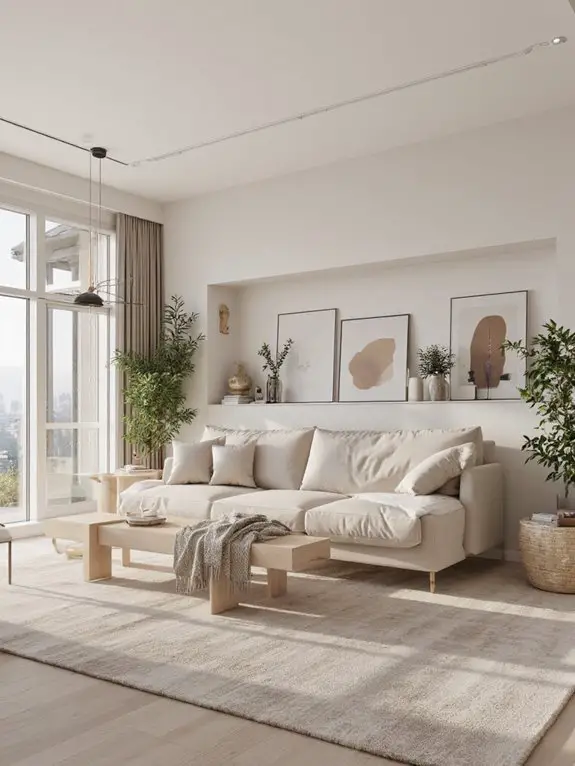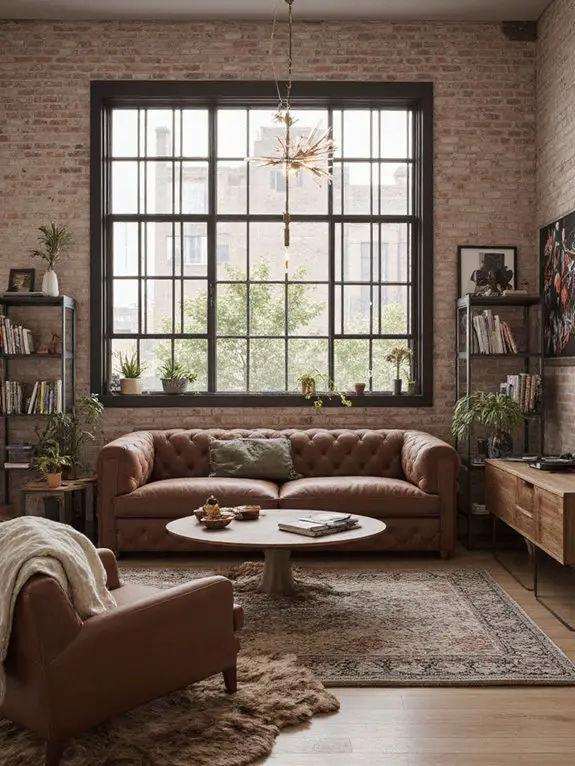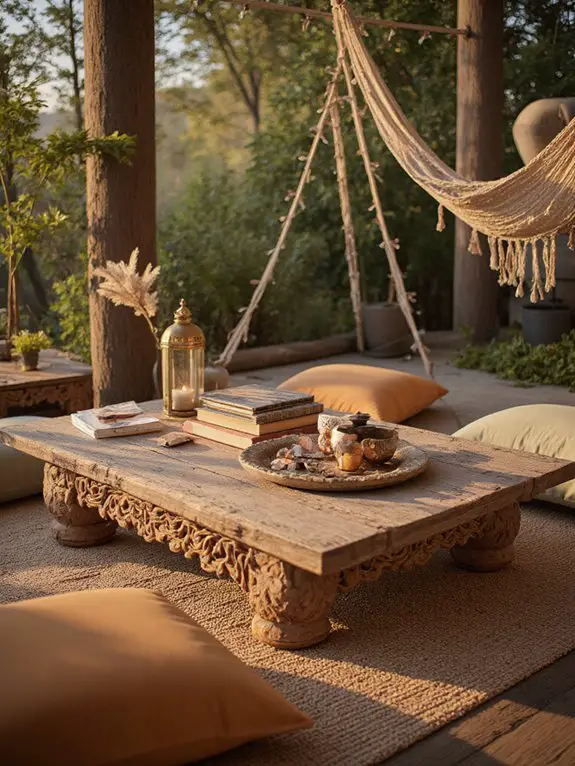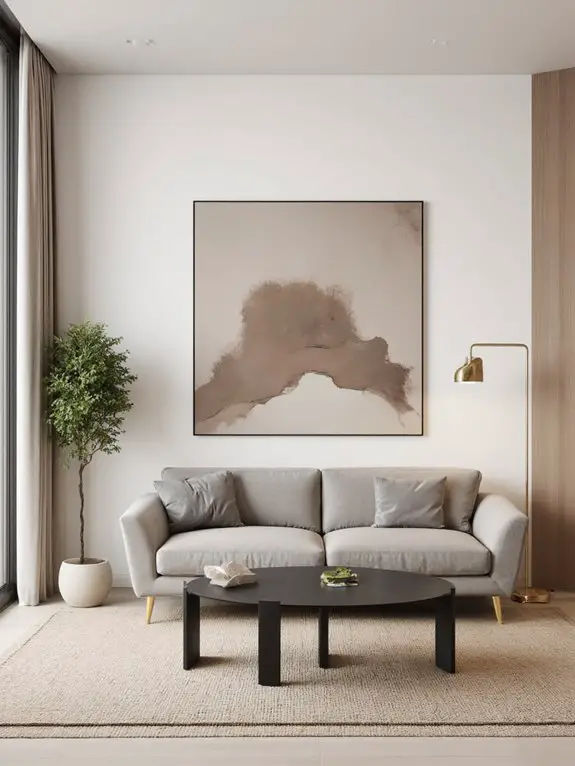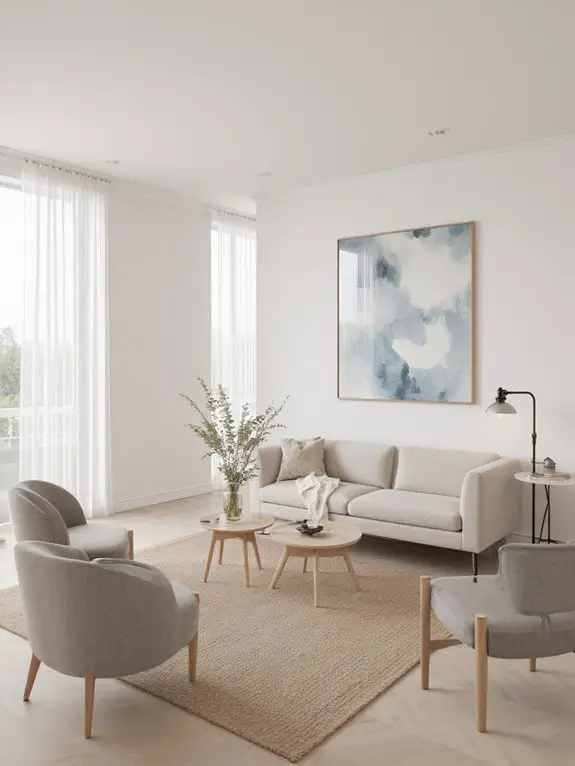I’ve explored 25 interior design aesthetic trends that blend functionality, creativity, and personal expression to transform any space. From biophilic designs that bring nature indoors to minimalist modern styles emphasizing clean lines, there’s something for everyone. Japandi Fusion merges Scandinavian warmth with Japanese minimalism, while Maximalist Boldness embraces vibrant layers and rich textures. Scandinavian Simplicity focuses on light and clutter-free environments, and Global Eclectic blends cultural influences for a dynamic look. Keep going to uncover even more inspiring ideas.
Biophilic Design
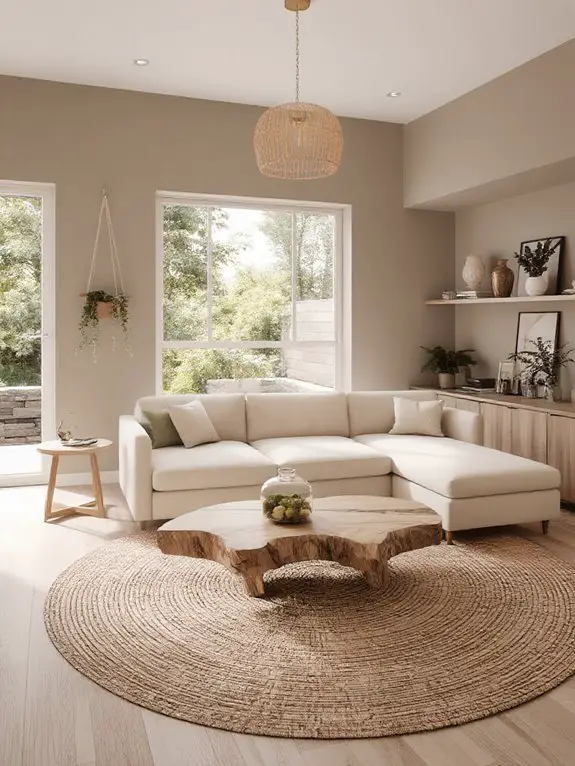
Biophilic design integrates nature into indoor spaces to create environments that feel alive and connected to the outdoors. I’ve found that incorporating elements like natural light, indoor plants, and organic materials can transform a room into a calming sanctuary.
For example, large windows or skylights invite sunlight, while potted ferns or hanging vines add a touch of greenery. I also recommend using wood, stone, or bamboo textures to ground the space.
Water features, like tabletop fountains, can enhance tranquility. By blending these elements thoughtfully, I create spaces that not only look beautiful but also nurture well-being, making nature an integral part of daily life.
Minimalist Modern
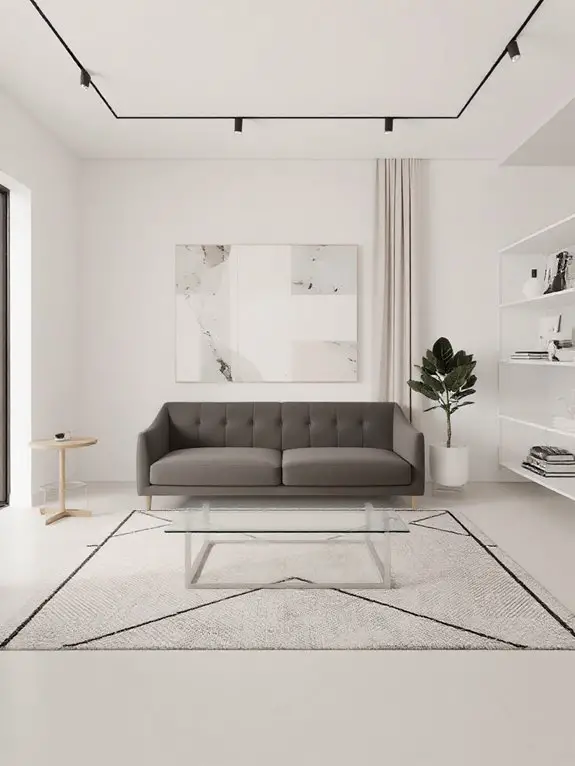
Although simplicity is at the core of minimalist modern design, it’s not about stripping a space bare—it’s about intentionally curating elements to achieve balance and functionality. I focus on clean lines, neutral palettes, and purposeful furniture to create a serene yet functional environment.
Every piece I choose serves a purpose, eliminating clutter without sacrificing warmth. I integrate natural materials like wood and stone to add texture, and I keep surfaces uncluttered to emphasize openness.
Lighting plays a key role—I opt for sleek fixtures or maximize natural light. Minimalist modern isn’t just a style; it’s a philosophy of intentional living.
Japandi Fusion
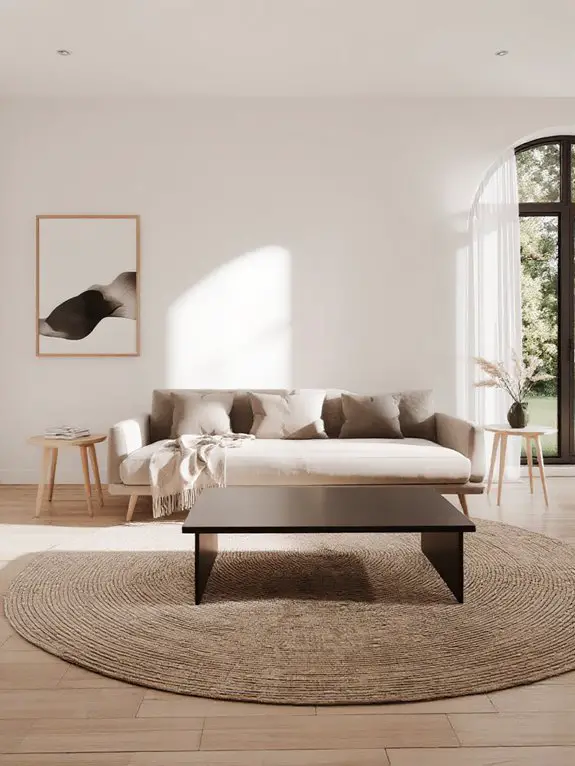
Combining the serene minimalism of Japanese design with the functional warmth of Scandinavian aesthetics, Japandi fusion creates a harmonious balance that’s both timeless and practical. I find its emphasis on clean lines, natural materials, and muted color palettes incredibly calming.
Think light woods like ash and oak paired with soft neutrals—beige, gray, and white—accented with black for depth. The key is to keep spaces clutter-free while incorporating cozy textiles like linen or wool.
I love how Japandi blurs the line between form and function, creating spaces that feel intentional yet inviting. It’s a style that embraces simplicity without sacrificing comfort.
Maximalist Boldness
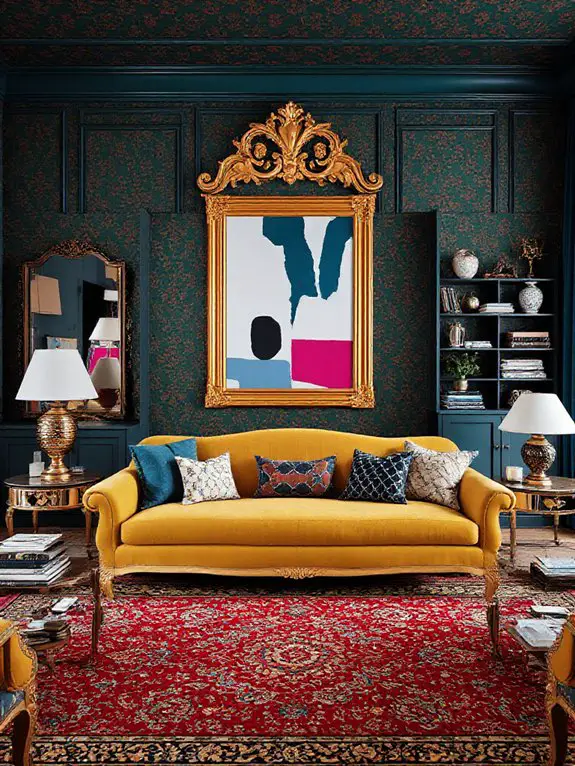
While minimalism has long dominated interior design, maximalist boldness flips the script with vibrant layers, rich textures, and fearless self-expression. I embrace bold patterns, mixing florals with geometrics, and pair unexpected colors like emerald green with deep magenta.
Layering textiles is key—think velvet cushions, silk drapes, and plush rugs. I incorporate statement furniture, like a jewel-toned sofa or an ornate chandelier, to anchor the space.
Displaying curated collections, such as art or ceramics, adds personality. Maximalism isn’t chaotic; it’s intentional. I focus on balance by grouping like items and using negative space sparingly.
This style lets me create a space that’s uniquely mine.
Scandinavian Simplicity
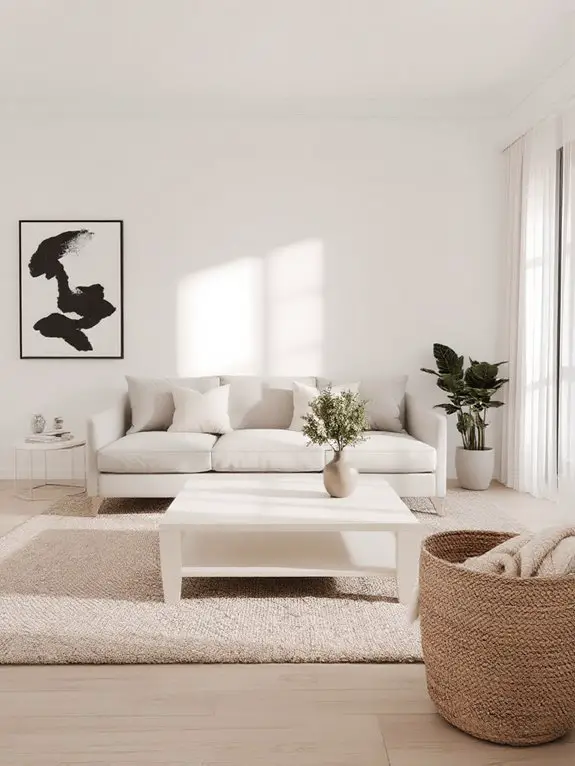
Scandinavian simplicity has long been celebrated for its clean lines and functional beauty, and it’s a style I turn to when I want to create a calming yet practical space.
I focus on light, neutral palettes—whites, grays, and soft pastels—to maximize natural light and create an airy feel. Wood finishes, especially light oak or birch, add warmth without overwhelming the minimalism.
Functional furniture with sleek designs is key; think modular sofas and multi-purpose tables.
I keep decor minimal, using a few carefully chosen pieces like pottery or textured throws.
The result? A serene, clutter-free environment that feels both inviting and efficient.
Industrial Chic
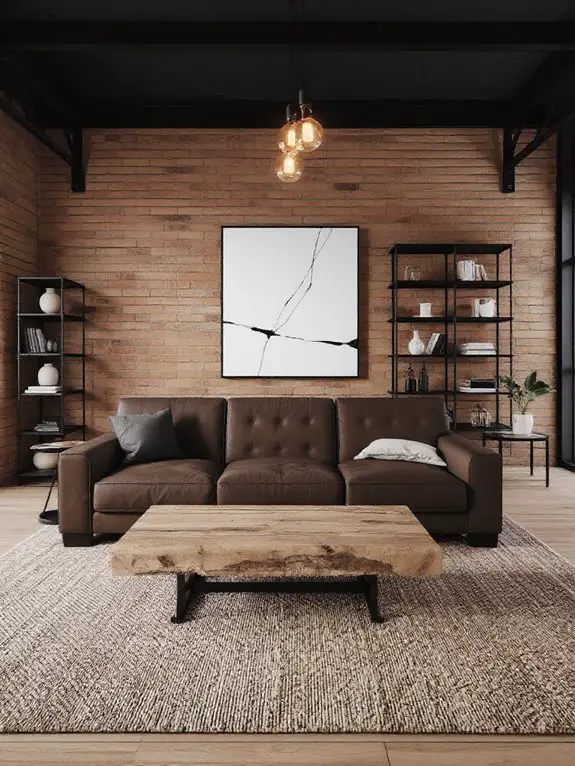
Industrial Chic embraces raw, unfinished elements that highlight the beauty of urban architecture. I love how it combines exposed brick, concrete floors, and metal beams to create a space that feels both edgy and sophisticated.
To achieve this look, I focus on neutral color palettes—think blacks, grays, and whites—with pops of muted tones like olive or rust. Incorporating vintage or salvaged furniture adds character, while modern lighting fixtures, like Edison bulbs or steel pendants, bring a polished touch.
I always keep the layout open and functional, emphasizing minimalism without sacrificing warmth. Industrial Chic is about celebrating imperfections and making them the centerpiece of your design.
Bohemian Eclectic
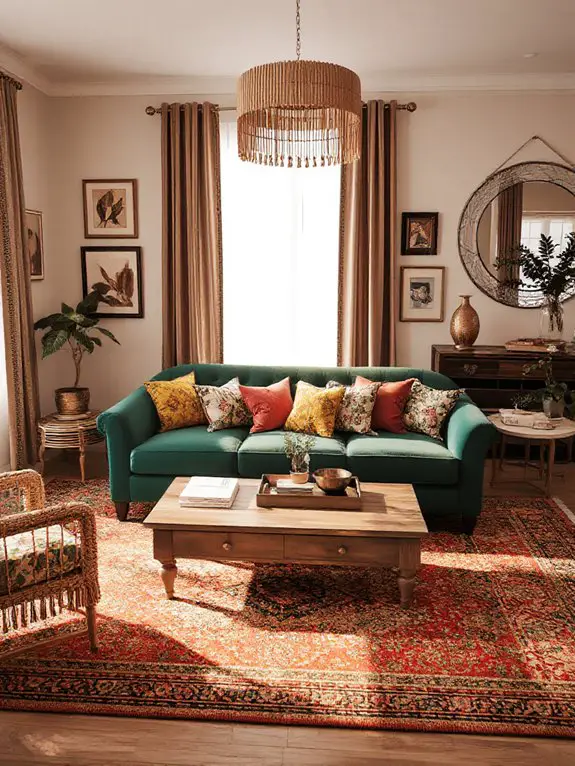
Bohemian Eclectic is a style that celebrates creativity and individuality, blending textures, patterns, and colors in a way that feels effortless yet intentional. I love how it mixes vintage finds with global influences, creating a space that tells a story.
Layer rugs, toss in embroidered pillows, and don’t shy away from bold hues—moody jewel tones or earthy neutrals both work. Plants are essential, adding life and softness.
The key is balance; too much clutter feels chaotic, but curated layers feel cozy. Embrace imperfections—a frayed edge or mismatched chair adds charm. It’s about creating a home that feels uniquely yours.
Mid-Century Modern Revival
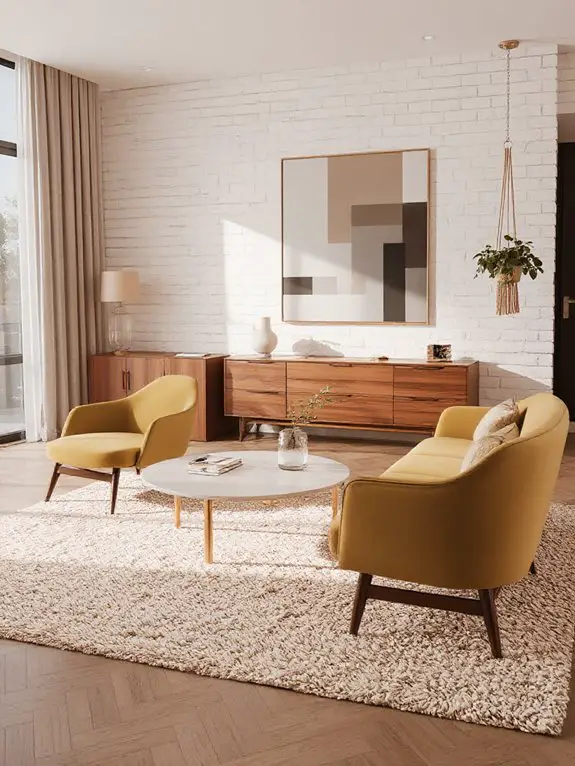
Though its origins date back to the mid-20th century, the Mid-Century Modern Revival continues to captivate with its clean lines, timeless appeal, and functional elegance. I’ve always been drawn to its blend of simplicity and sophistication, which makes it versatile for contemporary spaces.
Opt for statement pieces like teak wood furniture, tapered legs, and organic shapes. Neutral palettes with pops of bold color—mustard yellow, burnt orange, or olive green—work wonders.
Don’t shy away from mixing materials like walnut, leather, and brass. Lighting is key; think Sputnik chandeliers or dome pendant lamps. It’s a style that feels fresh yet deeply rooted in history.
Coastal Calm
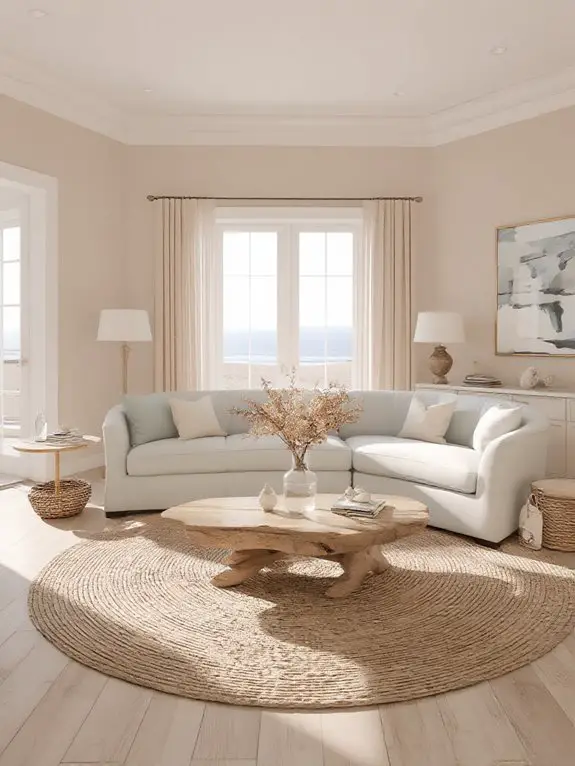
While Mid-Century Modern Revival emphasizes bold accents and structured forms, Coastal Calm offers a revitalizing shift with its focus on serenity and natural elements. I’ve found it’s all about creating a space that feels like a rejuvenating escape.
Soft, neutral palettes—think sandy beige, soft blues, and whites—lay the foundation. Natural textures like rattan, driftwood, and linen add warmth and authenticity.
I always recommend incorporating plenty of natural light and airy fabrics to enhance the breezy vibe. Seashells, coral accents, and ocean-inspired artwork can subtly tie the theme together without feeling overdone. It’s effortless tranquility.
Art Deco Glamour
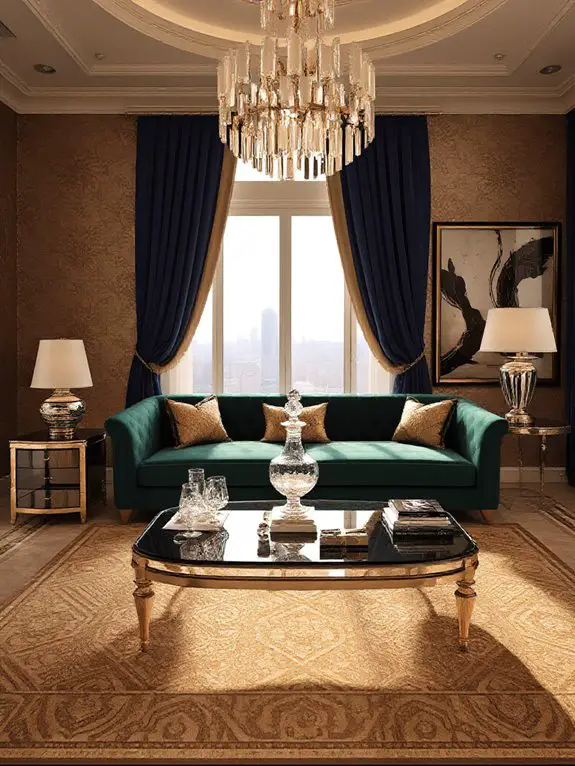
As we move from the serene tones of Coastal Calm, I’m drawn to the bold sophistication of Art Deco Glamour, a style that’s all about luxury and geometric precision.
I love how it combines rich materials like polished metals, lacquered woods, and sumptuous velvets with sharp, symmetrical patterns. Think bold chevrons, sunburst motifs, and streamlined furniture.
I’d suggest incorporating statement pieces like a mirrored sideboard or a chandelier with clean lines. Don’t shy away from bold colors—deep emerald, navy, or gold can anchor the space.
Balance glamour with restraint to avoid overwhelming the room while keeping it undeniably elegant.
Cottagecore Charm
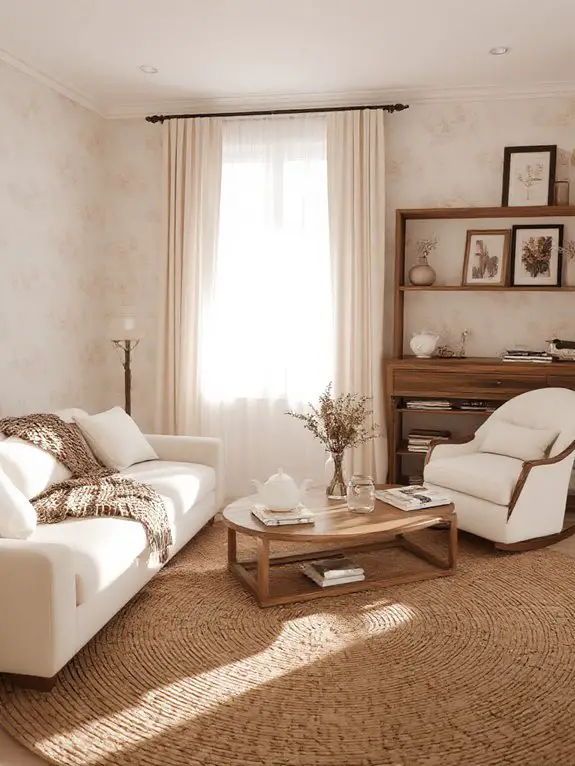
After the bold luxury of Art Deco Glamour, I find myself drawn to the warmth and simplicity of Cottagecore Charm. This aesthetic celebrates nature, nostalgia, and handmade touches, creating cozy, lived-in spaces.
Think floral patterns, natural wood furniture, and soft, muted colors like sage green and cream. I recommend adding vintage ceramics, woven baskets, and fresh flowers to evoke a countryside feel.
Layered textiles—quilts, linen curtains, and knitted throws—enhance the comfort. It’s about embracing imperfection and authenticity; a mismatched tea set or a weathered bookshelf adds character.
Cottagecore fosters a sense of tranquility, making your home feel like a peaceful retreat.
Dark Academia
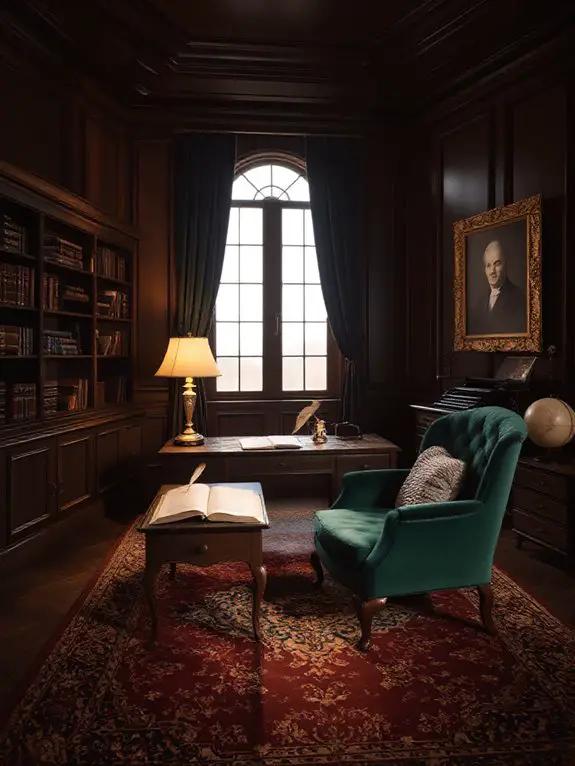
Dark Academia, inspired by the intellectual and Gothic allure of old universities, invites a moody, scholarly atmosphere into your home. I’d recommend starting with a palette of deep browns, blacks, and dark greens, paired with rich textures like leather, velvet, and aged wood.
Think antique bookshelves filled with classic literature, vintage globes, and framed scholarly prints or botanical illustrations. Dim, warm lighting from brass or iron fixtures enhances the ambiance.
Layer in personal touches—a well-worn desk, a stack of weathered notebooks, or a vintage typewriter. This aesthetic thrives on intentional clutter, creating a space that feels both thoughtful and lived-in.
Light Academia
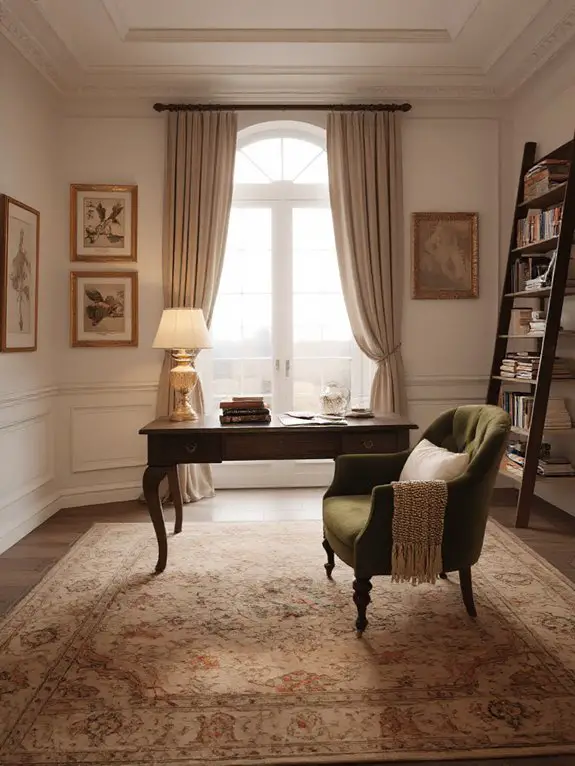
While Dark Academia embraces moody tones, Light Academia offers a brighter, airier take on scholarly elegance, blending classic intellect with effortless warmth. I love how it emphasizes soft neutrals like ivory, beige, and cream, paired with gentle pastels to create a serene, inviting space.
Think vintage books, antique wooden desks, and delicate floral patterns—elements that evoke a sense of timeless learning and tranquility. Natural light is key, so I always recommend sheer curtains or open windows to enhance the airy feel.
Combine these with cozy textiles like linen throws and plush rugs to balance sophistication with comfort effortlessly.
Modern Farmhouse
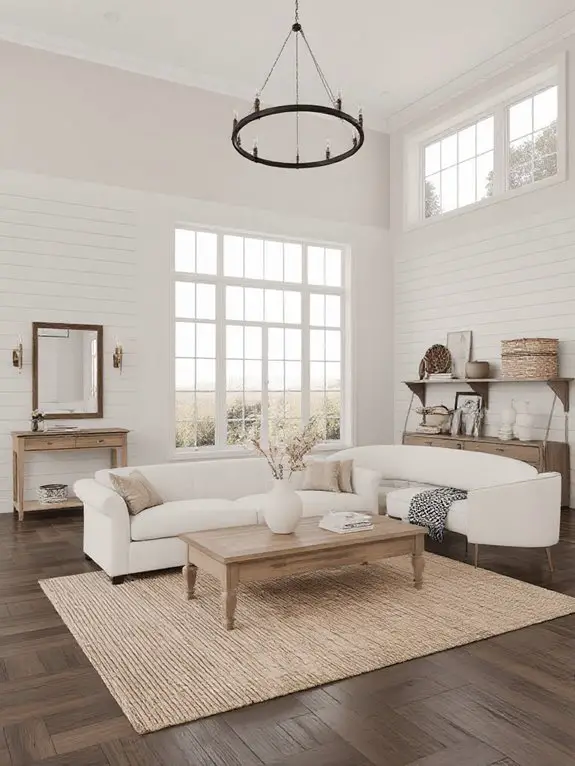
Modern Farmhouse blends rustic charm with contemporary simplicity, creating a design that feels both warm and streamlined. I love how it combines natural materials like reclaimed wood and stone with sleek, clean-lined furniture for a balanced look.
Neutral color palettes dominate, with whites, grays, and beiges accented by black metal fixtures. I often recommend layering textures—think cozy linen throws, jute rugs, and woven baskets—to add depth.
Shiplap walls and barn doors are signature elements, but I suggest using them sparingly to avoid overkill. Open shelving in kitchens showcases curated essentials, blending function with style.
It’s inviting yet polished, perfect for modern living.
Rustic Refinement
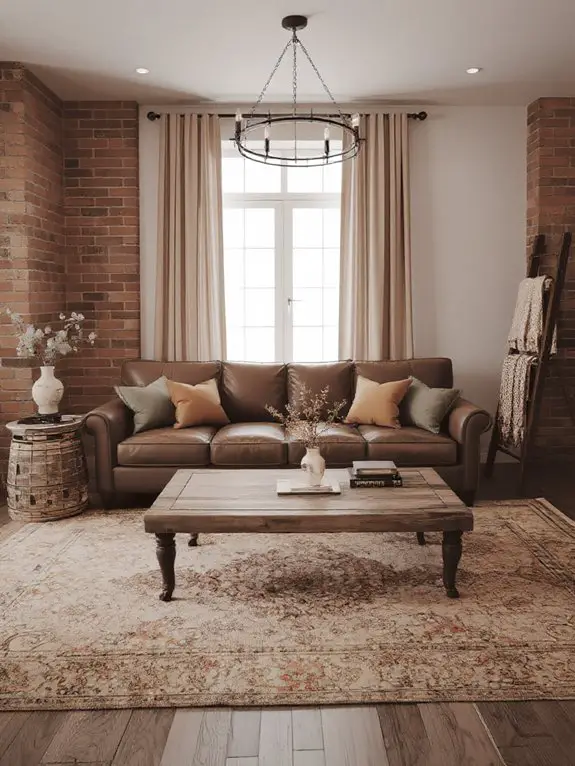
Rustic Refinement takes the raw appeal of natural elements and elevates them with polished sophistication, striking a balance between rugged charm and understated elegance.
I love how this style combines reclaimed wood, stone, and wrought iron with sleek finishes like brushed metals or matte ceramics. It’s about layering textures—think a weathered leather sofa paired with soft linen pillows or a chunky wood table with delicate glass accents.
Neutral palettes dominate, but I add warmth with earthy tones or muted greens.
Lighting plays a key role; I opt for iron chandeliers or pendant lights to enhance the ambiance without overwhelming the space.
Transitional Elegance
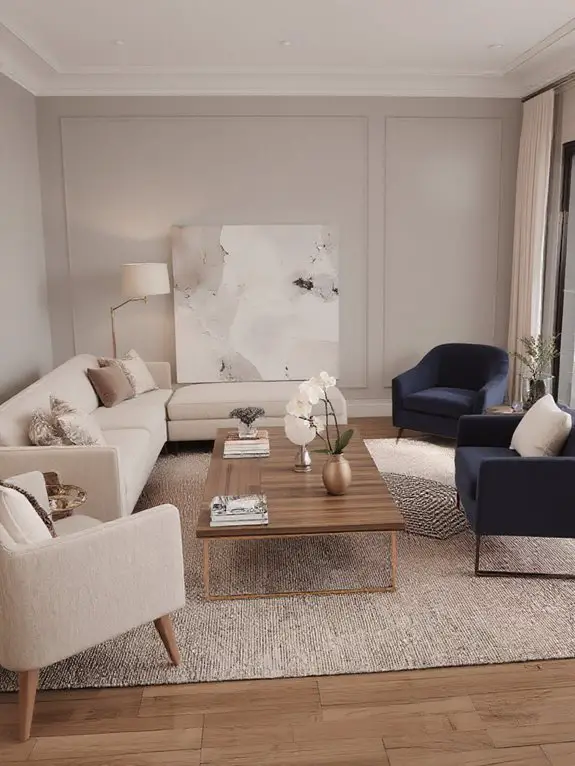
If you’re looking to blend traditional charm with contemporary flair, Transitional Elegance offers a seamless shift that feels both timeless and fresh. I love how it marries classic elements like tufted furniture or intricate molding with sleek, modern touches—think clean lines and neutral palettes.
It’s all about balance; you don’t want one style to overpower the other. Layering textures like linen, leather, and metal adds depth without clutter.
I often recommend starting with a neutral base and introducing subtle pops of color or pattern through accessories. It’s a versatile aesthetic that adapts to evolving tastes while maintaining sophistication.
Urban Jungle
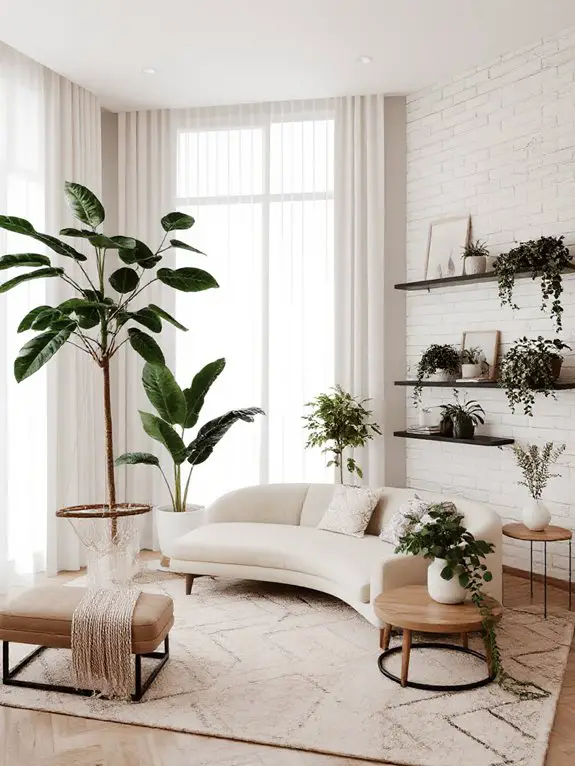
While many urban spaces feel stark and lifeless, the Urban Jungle aesthetic brings nature indoors, creating a vibrant, calming atmosphere that’s both invigorating and practical. I focus on incorporating plants of varying heights, textures, and shades of green to mimic a layered, natural environment.
Easy-care options like pothos, snake plants, and monstera are my go-tos for low maintenance. I pair them with neutral-toned furniture and natural materials like wood, rattan, or jute to balance the greenery.
Strategic placement near windows guarantees proper light, while hanging planters and shelves maximize space. It’s a design that breathes life into any urban dwelling.
Tropical Paradise
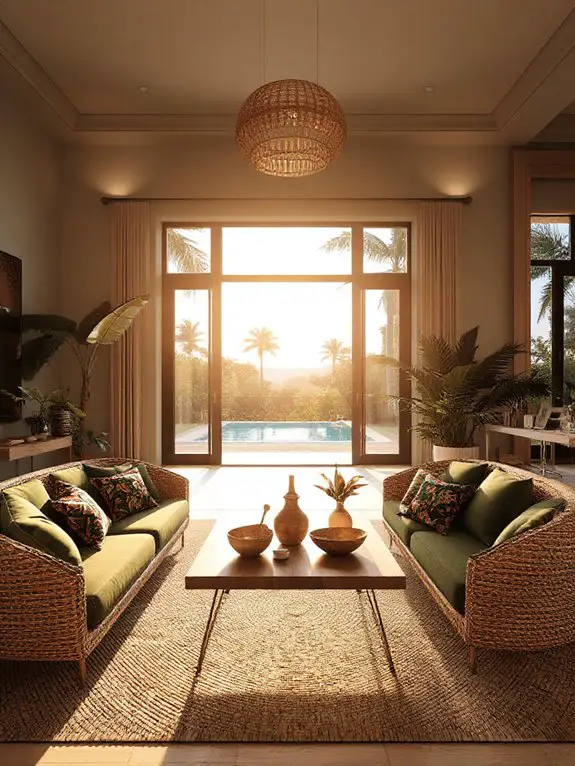
To create a Tropical Paradise aesthetic, I focus on bold colors, natural elements, and relaxed textures that evoke the warmth and vibrancy of a coastal retreat. I lean into rich greens, sunny yellows, and ocean blues, often balancing them with neutral tones like beige or white to avoid overwhelming the space.
Incorporating natural materials such as rattan, bamboo, and jute adds authenticity, while lush plants like palms and monstera bring life indoors. I opt for breezy fabrics like linen and cotton in light, airy patterns.
Layering in tropical prints and textured accents, I aim for a space that feels both vibrant and effortlessly relaxed.
Futuristic Minimalism
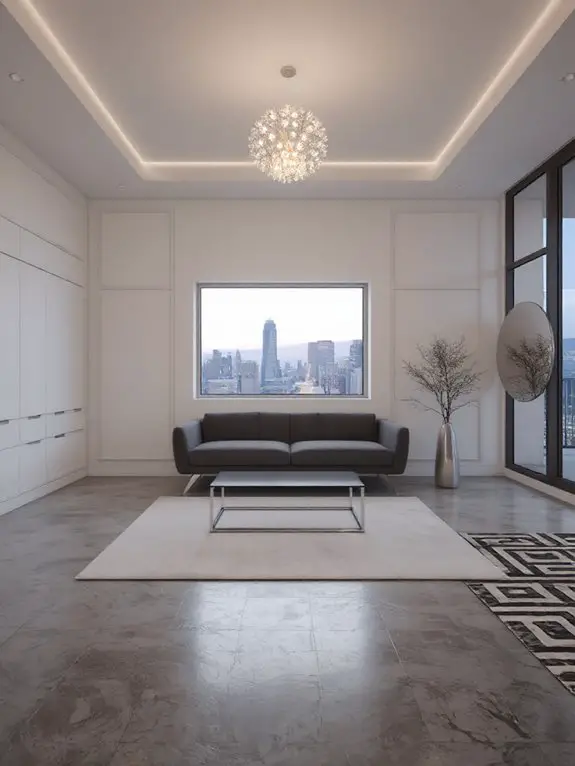
Futuristic Minimalism embraces clean lines, innovative materials, and a restrained color palette to create spaces that feel both sleek and forward-thinking. I focus on using materials like polished metals, glass, and sustainable composites to achieve a crisp, modern look.
Neutral tones like whites, grays, and blacks dominate, with occasional pops of metallic accents for depth. Furniture is functional yet sculptural, often with geometric shapes. Lighting plays a key role—integrated LED strips or smart fixtures enhance the ambiance.
I avoid clutter, opting for multi-functional pieces that maximize utility. The result is a serene, efficient space that feels effortlessly advanced yet timeless.
Cyberpunk Edge
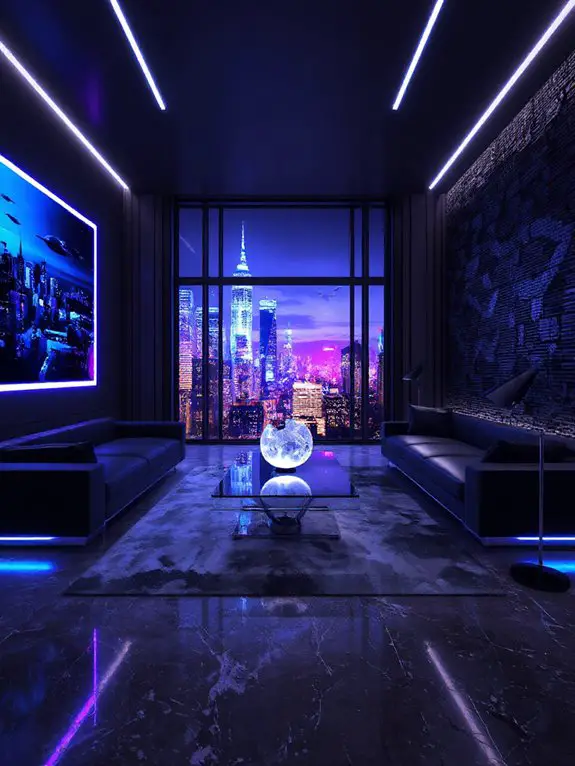
Cyberpunk Edge takes inspiration from the neon-lit, tech-driven worlds of science fiction, blending gritty urban vibes with cutting-edge innovation. I focus on bold, saturated colors like neon blues, purples, and reds, often paired with dark, moody tones like black and charcoal.
Metallic finishes and reflective surfaces, such as chrome or brushed steel, are key to achieving that futuristic feel. I incorporate industrial elements like exposed pipes or concrete walls but soften them with sleek, futuristic furniture and smart home tech.
Lighting is essential—think LED strips, glowing panels, and harsh, directional fixtures to create an immersive, dystopian atmosphere that feels alive.
Vintage Nostalgia
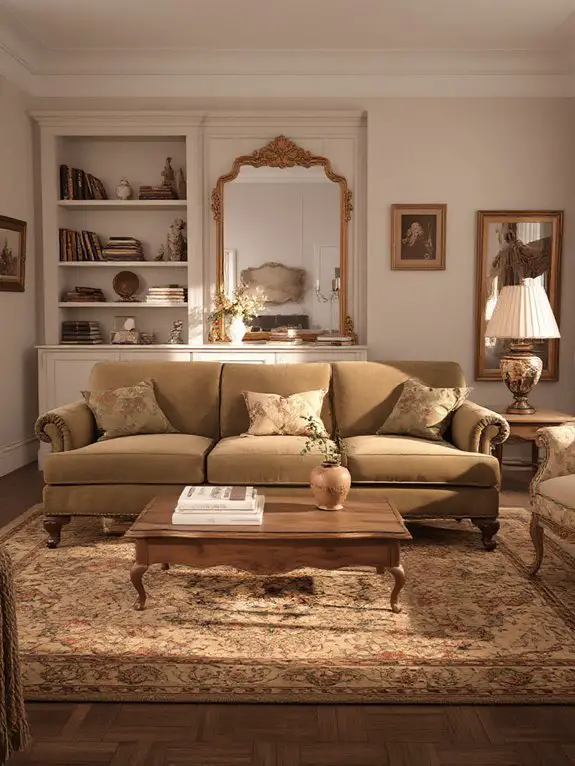
Vintage Nostalgia taps into the charm of bygone eras, blending timeless design elements with modern practicality to create spaces that feel both familiar and fresh. I love incorporating mid-century furniture, Art Deco accents, or Victorian-inspired patterns to evoke a sense of history.
Mixing antique pieces with contemporary decor keeps the look balanced and avoids a dated feel. I often focus on warm, muted color palettes and natural materials like wood and brass to enhance the nostalgic vibe.
Layering textures—think velvet cushions or lace curtains—adds depth. The key is curating intentionally, ensuring each piece tells a story while maintaining functionality in everyday life.
Parisian Chic
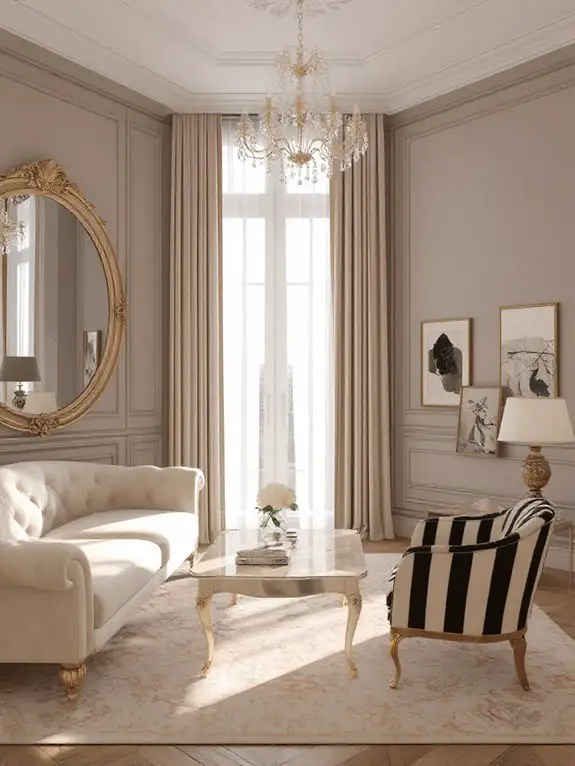
With its effortless elegance and timeless appeal, Parisian Chic brings a touch of sophisticated minimalism to any space. I love how it balances ornate details with clean lines, using muted palettes like creams, grays, and soft blues.
Think antique mirrors, gilded frames, and a mix of vintage and modern furniture. The key is restraint—avoid clutter and let each piece shine.
I always incorporate natural materials like wood and marble for warmth. A single statement chandelier or a well-placed art piece elevates the room.
It’s about curating, not filling, to create that effortlessly polished look Paris is known for.
Nautical Themes
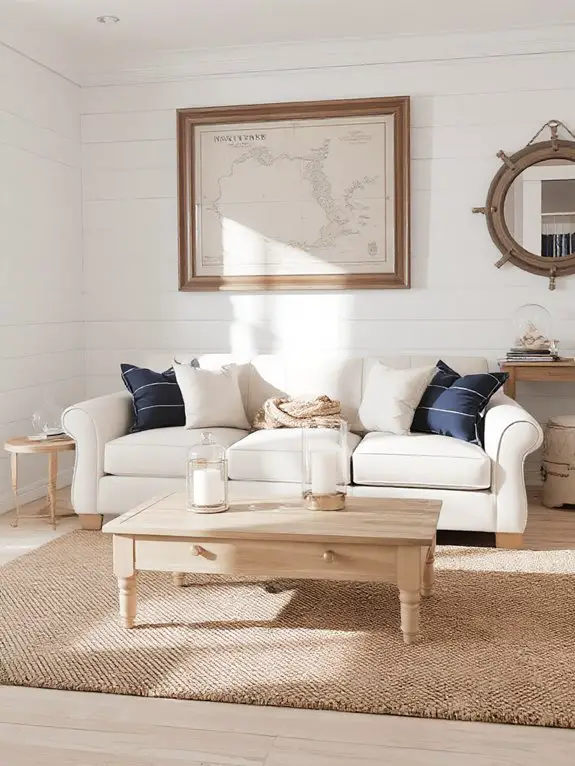
Nautical themes bring the serene and invigorating essence of the sea into your home, creating a space that feels both fresh and timeless. I love incorporating navy blues, crisp whites, and sandy neutrals to evoke a coastal vibe. Striped patterns, rope accents, and weathered wood elements add texture and authenticity.
Don’t forget subtle touches like anchor motifs or driftwood decor to enhance the theme without overwhelming the space. Lighting is key—I opt for fixtures reminiscent of ship lanterns to tie everything together.
It’s a design that feels inviting and relaxed, perfect for anyone craving a breezy, oceanic atmosphere indoors.
Monochromatic Sophistication
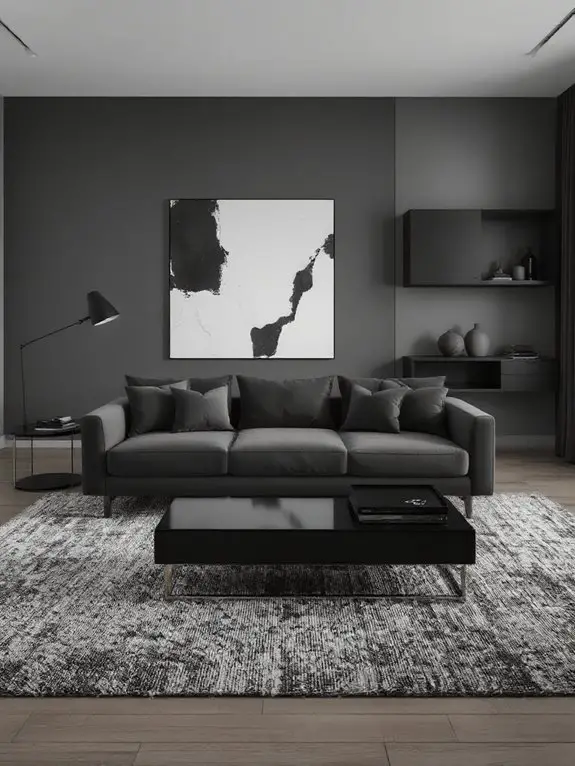
Monochromatic sophistication creates a space that’s both polished and calming by focusing on layers of a single color. I find that using varying shades, tones, and textures within one hue adds depth without overwhelming the eye.
For example, pairing soft, matte walls with glossy accents or textured fabrics can elevate the room’s design. I often incorporate neutral backdrops like creams or grays to keep the look timeless yet refined.
Accessories in the same tonal family—think art, rugs, or decor—unify the space. It’s a minimalist approach that feels deliberate and luxurious, perfect for creating harmony in any room.
Global Eclectic
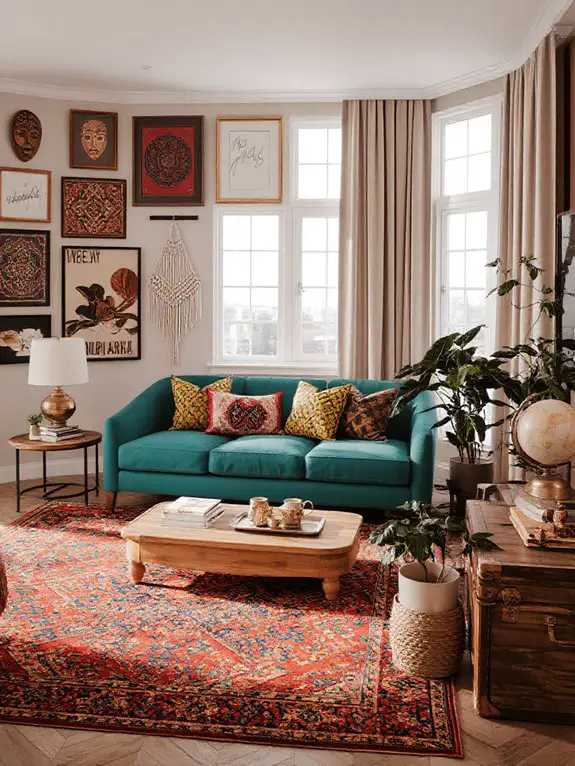
Global Eclectic blends cultural influences, patterns, and textures to create a vibrant and personalized space. I love how it lets me mix pieces from different cultures—like Moroccan rugs, Japanese screens, or Scandinavian furniture—to tell a unique story. The key is balance; I’ll pair bold prints with neutral tones and layer textures like woven baskets or velvet cushions.
I always focus on cohesion by sticking to a consistent color palette or repeating a motif. It’s not about filling every corner but curating meaningful items that reflect my personality and travels. This style celebrates diversity, making my home feel worldly, warm, and truly one-of-a-kind.
Frequently Asked Questions
How Do I Choose the Right Lighting for My Space?
When I choose lighting, I think about the room’s purpose and mood. I mix ambient, task, and accent lights for balance. Natural light’s important, so I position fixtures to complement it. I don’t forget dimmers for flexibility.
What Are the Best Paint Colors for Small Rooms?
I’d go for light and neutral tones for small rooms—like soft whites, pale grays, or light blues—to make the space feel bigger. I’d avoid dark colors since they can make it feel cramped.
How Can I Incorporate Personal Items Without Clutter?
I’ll weave my cherished treasures into the room like whispers of memory, tucking them into curated corners or floating shelves, letting each piece breathe without crowding. A few meaningful items can sing louder than a chorus of chaos.
What Materials Are Best for Pet-Friendly Furniture?
I’d choose durable, easy-to-clean materials like leather or microfiber for pet-friendly furniture because they resist scratches and stains. I’d avoid delicate fabrics like silk since they’re harder to maintain with pets around.
How Do I Balance Trendiness With Timeless Design?
I focus on timeless furniture and invest in quality pieces that withstand trends, but I add trendy accents like throw pillows, artwork, or decor that’s easy to swap out when styles change. That way, my space feels fresh and classic.

